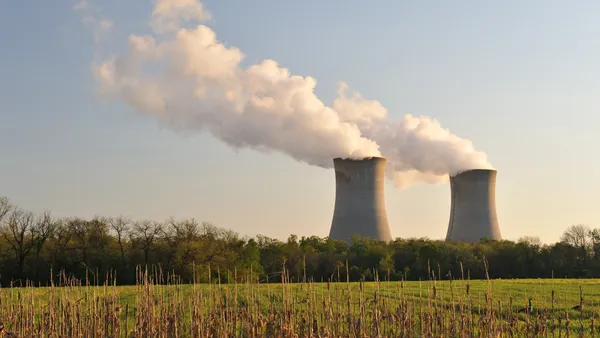Dive Brief:
- Pacific Gas & Electric (PG&E) on Monday received approval to move ahead with financing commitments of approximately $20 billion to support its emergence from Chapter 11 bankruptcy — a development that is one of many important milestones for the company, U.S. Bankruptcy Judge Dennis Montali said during a telephonic hearing.
- The proposed backstops — which include $9 billion in equity and $10.825 billion in debt — are "particularly important" given market volatility caused by the coronavirus outbreak, PG&E said in its March 2 motion. California Gov. Gavin Newsom, who previously objected to the financing motion, did not oppose it at the hearing.
- However, PG&E needs the California Public Utilities Commission (CPUC) to approve its plan before it can exit bankruptcy and the agency "is conducting a much more thorough review of the issues," with more opportunities for stakeholders to weigh in, Mark Toney, executive director of The Utility Reform Network (TURN), told Utility Dive.
Dive Insight:
PG&E lined up "backstop" commitments to make sure that it has sufficient funds once it does exit bankruptcy, even if market conditions deteriorate, the company said in its March motion, adding that economic uncertainty caused by the COVID-19 pandemic demonstrates the need for the backstops.
The proposal initially drew objections from Gov. Newsom, who said in a January filing that the package could require PG&E to pay more than $1 billion in fees to support its proposed capital structure. The plan relies heavily on debt and expensive short-term bridge financing, which could prevent the reorganized PG&E from investing in safety measures, according to the governor's attorneys.
But during the telephonic hearing on Monday, a representative for the governor said his office is engaging in productive discussions with PG&E, and did not raise any objections to the motion.
"The complexity of the transaction is beyond my understanding," Montali said, adding that PG&E's advisors, Gov. Newsom and other parties "have put their heads together in one of the most complicated things that, I guess, has ever occurred in U.S. refinancing, and probably more complicated by the world situation," he said.
Montali's approval of the motion is "another major milestone in our Chapter 11 cases," PG&E spokesperson Ari Vanrenen said in an emailed statement, adding that the utility is making good progress on discussions with the governor's office and is on track to exit bankruptcy by June 30.
Montali on Monday also announced that all of PG&E's bankruptcy hearings will take place via telephone through at least April 17, based on guidance from the Centers for Disease Control and Prevention and the U.S. Courts administrative office amid the COVID-19 pandemic. But PG&E doesn't anticipate that the situation will disrupt its business operations or service, or impact its bankruptcy proceeding in any way, spokesperson Denny Boyles said in an email.
However, the utility still faces regulatory hurdles before it can emerge from bankruptcy — including the CPUC's review of whether its reorganization plan complies with Assembly Bill 1054, legislation passed last year.
"The bankruptcy court has recognized that part of the decision-making needs to happen at the PUC," TURN's Toney said.
"We share the concern that the Governor has expressed — that maybe getting out of bankruptcy will cause PG&E to be over-leveraged in terms of all the money it owes, and we're worried about future financial stability. The last thing we want to see is PG&E back in bankruptcy five years from now," Toney added.
One of TURN's chief concerns is how the commission will interpret AB 1054's requirement that PG&E's plan be neutral to its ratepayers.
"We really want to make sure that … ratepayers aren't going to be charged more for PG&E getting out of bankruptcy, that there's not going to be a bail-out of the PG&E bankruptcy," Toney said.
TURN detailed some of its positions in its testimony last Friday. It asked the commission not to allow PG&E to pass on to ratepayers any professional fees associated with its bankruptcy, its financing-related costs and fees, or claims from victims of the Northern California wildfires.














